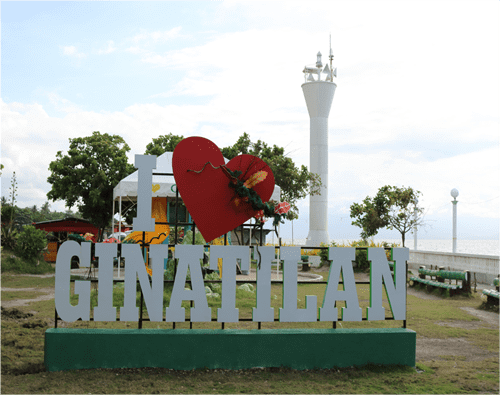
Ginatilan is a 5th class municipality with 14 barangays. Ginatilan is the third town in the Southwestern trip of the Province of Cebu. "Hinatdan" is the former name of Ginatilan. Before Ginatilan became a municipality, it was one of the barangays belonging to Samboan. Spanish friars had to bring along with them acolytes and things they needed for the Holy Mass since the chapel in Hinatdan did not have its own. This was how the word hinatdan came into being, a vernacular word that means any of the goods and services were transported from place to another. Ginatilanons are warm and friendly people.
Believed to be the birth place of Beato Pedro Calungsod. Hablon or Abaca weaving is one of the livelihood of the Ginatilanons. Ginatilanons are also famous for Tacocong making or "Sarok". Ginatilan is famous for its delicacies Sinakol and Palagsing. St. Gregory the Great Parish was built in February 2, 1829. Though the church was built earlier, it became a parish in 1847, St. Gregory the Great, the town's patron saint. The church is located at the heart of the town still stands lofty and dominates other structure.
The Ancestral House of the Ferrolins was built in 1700. The Ancestral House of the Ferrarens became the "Casa Real" or the seat of government during the Spanish Era. Holy Trinity College is one of the pioneering secondary schools in the South. Bantayan sa Hari or the Watchtower, Puerta dela Marina served as the gateway to the sea for the fishermen and beach lovers during the Spanish era. Mt. Hambubuyog, the highest mountain of Ginatilan. The Divine Mercy is also located in Mt. Hambubuyog where it draw hundreds of visitors during the holy week.
Inambakan Falls is a three-level falls situated in Barangay Calabawan. Millenium Park, Lighthouse, the Municipal Auditorium's architectural structure is inspired by the Sydney Opera House of Australia. Be enchanted by the 12.4 hectares Ginatilan Marine Sanctuary. Hinatdan Festival is celebrated the week after Holy Week. The festival name "Hinatdan" was rightfully chosen because of its historical and religious value. It is a Festival of History, Festival of Arts and Culture, and Festival of Life for the Ginatilanons.